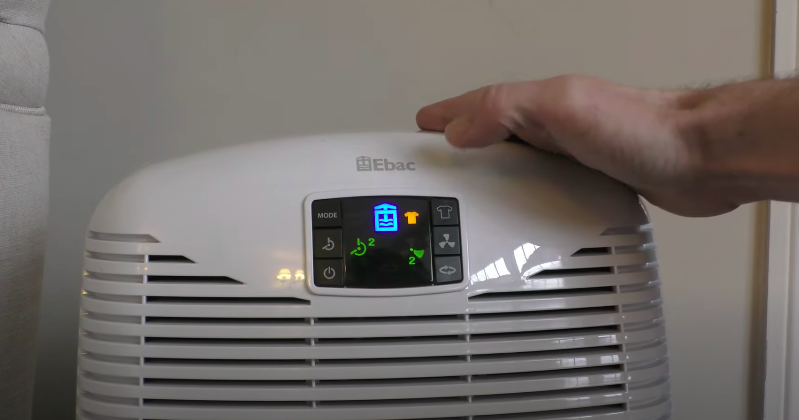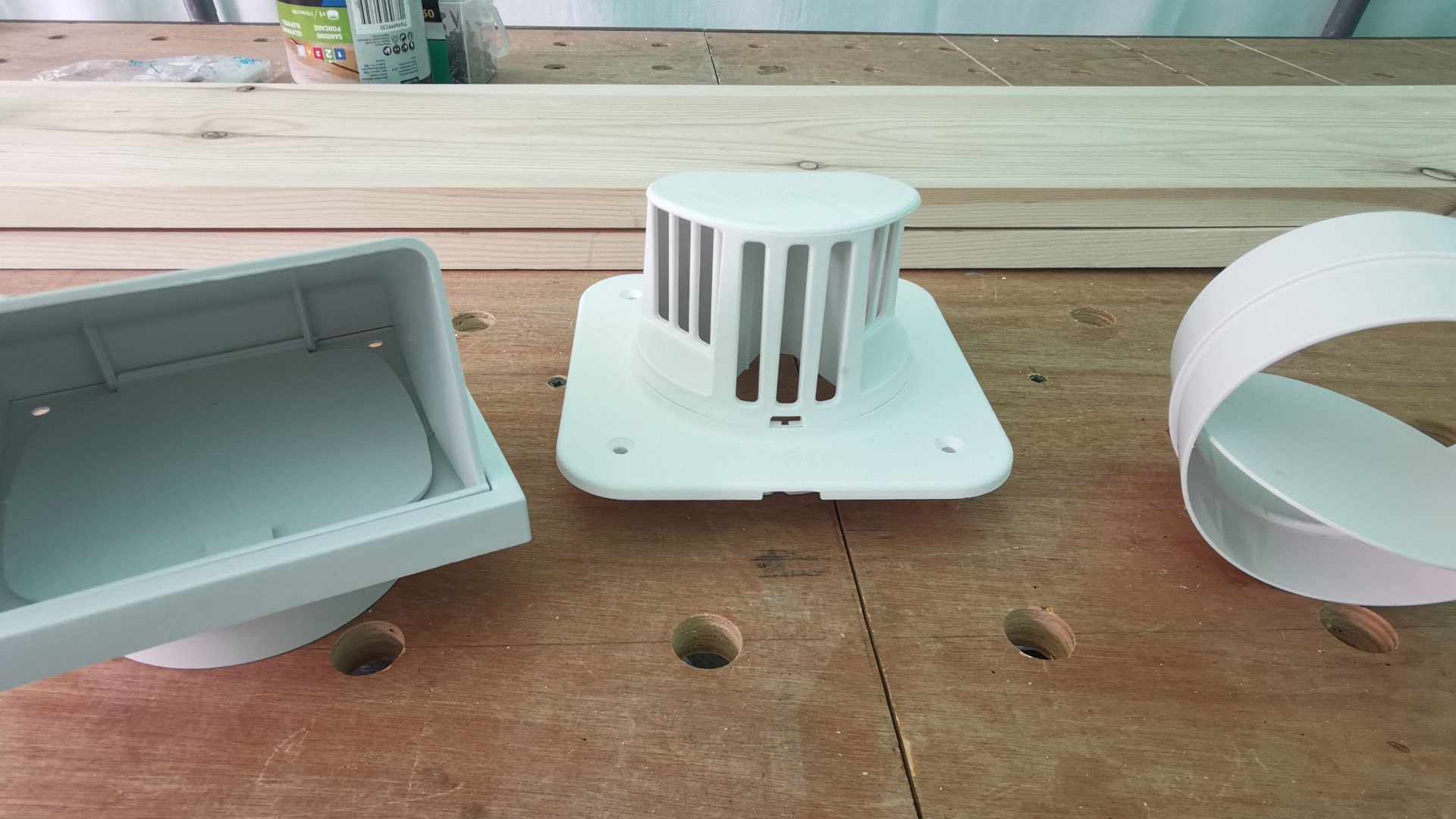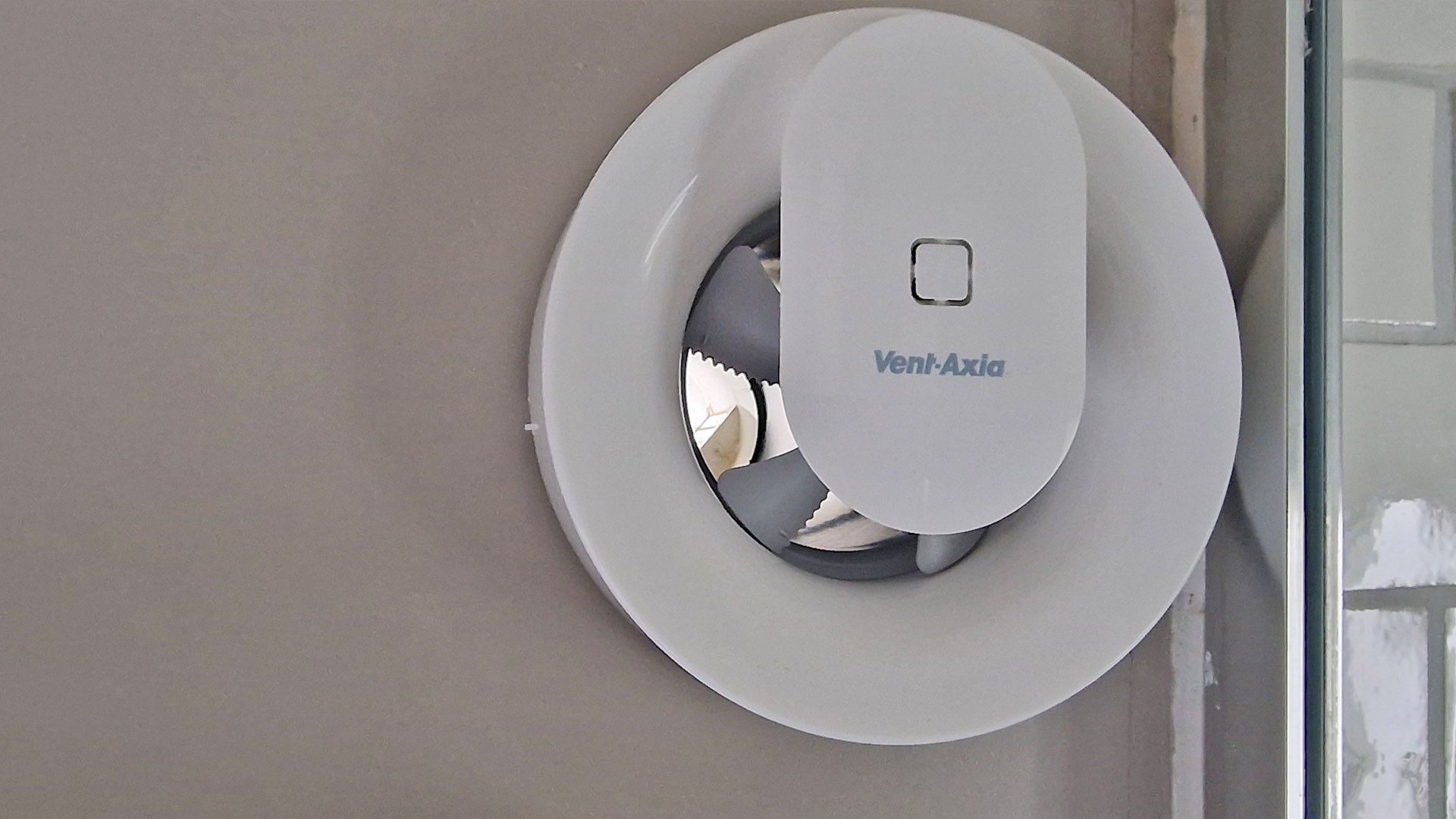Why You Need To Keep Moisture Low This Winter
Two years ago, I did a video (click here to watch) on how to prevent damp, mould and condensation. It’s something I’ve always been pretty evangelical about. In the current energy crisis as we all keep our heating off for as long as possible it’s more important than ever, so I’m going to concentrate on why it’s important to keep moisture as low as possible this winter, and how you can do this even without turning on the heating.
the importance of moisture control
So why is moisture control so important? Well, the higher the moisture in the air the harder it is to heat the house, and the higher the moisture content, the more likely that moisture is going to attach itself to cold surfaces like windows and cold walls. These surfaces basically act like dehumidifiers - they take all that moisture out of the air because when the moisture laden air hits the cold surface, it’s dew point is reached and it dumps the water onto that surface.
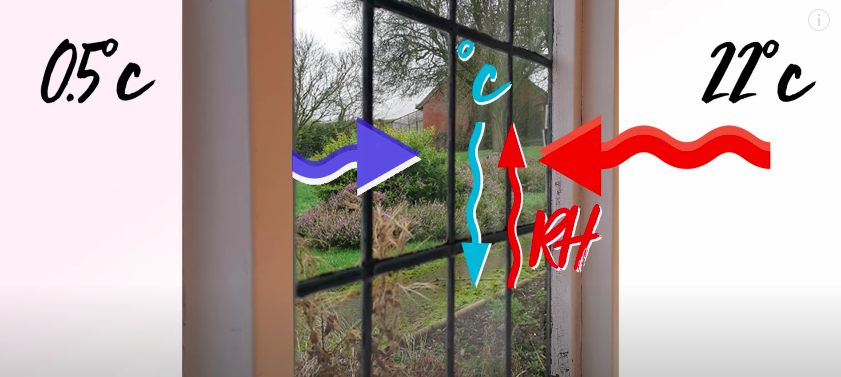
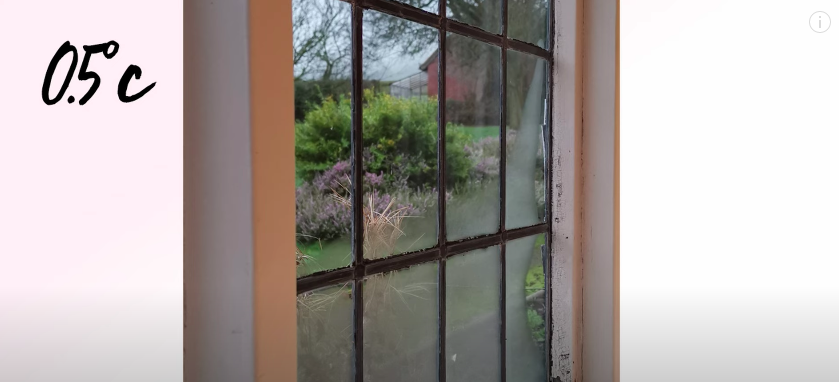
Most of us don’t even know how much moisture there is in our air, but this is SO EASY to rectify. If you do nothing else after reading this blog go and get yourself a hygrometer (I will link some that I recommend at the end of the blog) - better still one with an external monitor that way you can put the external monitor in another room and you’ve now got two areas of the house covered. You can pick these up very cheaply.
Basically you want your relative humidity in the comfort zone of between 30 and 60%. Why? Because under 30 is too dry - you’ll get chapped lips, dry skin etc. Above 60 and it’s wet enough for mould to form.
You’ll see me mention relative humidity a lot, but what am I on about? It’s basically a measure of how much water vapour is in a water air mix compared to the maximum amount of water vapour there could be in that air at a particular given temperature.
how humidity affects heating?
This bit is going to fry your mind so bear with me. So you’ve got a cold damp house. You turn on the heating. The house feels drier so the air is drier right? Wrong. When you heat air up what you’re doing is basically increasing the capacity of the air to hold water. So by heating a house that has quite a lot of moisture in the air, you’re basically masking the problem or tricking yourself into thinking you’ve solved it. In fact you’ve made it worse, because damp air is harder to heat up so your heating bills are going to go up, and also all that moisture in the air has to go somewhere - and what does it do? It dumps itself onto any cold surfaces - badly insulated windows and cold walls with bad air circulation.
So my call to action to you here is keep the air in your home as dry as possible this winter. I’ll explain how you can do that in a minute.
how to control moisture
It’s cold this winter so instinctively you shut tight all the windows, trickle vents and some of you will even be taping up air bricks. You hear about this a lot in new builds where building regs require them to be air tight. What happens, someone moves into a nice dry house, bolts everything shut and then starts pumping the house with moisture. How do we do this:
Cooking
Showering
Hanging up clothes to dry
Breathing (we emit 1 cup of water each day)
Now we can’t do anything about breathing, but we can do a massive amount to significantly reduce the moisture generated by the other three.
Cooking
If you’ve got a kitchen extractor fan, please put it on when you’re boiling stuff, and ideally open the window, because otherwise you’re creating a kind of vacuum which makes it harder for the extractor to remove the moisture from the air.
When boiling a kettle, only put enough water in for what you need. It drives me CRAZY that my wife fills the kettle to the brim each time in spite of all my efforts to tell her not to. Also our kettle is a nightmare if you leave it because it boils for about 30 seconds before switching off.
showers and baths
This is a controversial one because my family hate me for it, but please keep a window open when you’re showering or having a bath, and keep the bathroom door shut. SO MUCH moisture goes out of the window this way. If you haven’t got a window, make sure you have a decent extractor fan installed, and I did a video on this recently which you can watch here.
Less controversial but still really important - squeegee the shower down after each use, not just the glass, but the walls and the shower tray. I’m obsessed with doing this.
I normally use an Ikea squeegee, but using my Karcher window vac I removed nearly 200ml of water. If I hadn’t done this, that water would during the course of the day would have evaporated into the air, and chances are will end up as mould on a cold surface somewhere. Squeegee the wet surfaces each morning, leave the window open until you go to work, and literally within 10 minutes the bathroom feels like you haven’t even been in there!
Oh, and get a window vac - because you can vacuum up shower water but also all that condensation on your windows. The entry level Karcher is only £30 at B&Q - I buy all stuff like this through WeShop now as you get shares every time you buy, I’ll put a link at the bottom and if you use my username charliewhite you can sign up yourself and start shopping.
If you don’t have a window or an extractor fan, consider getting yourself a dehumidifier like this one, as that will set to work removing all of that damaging moisture whilst you’re out.
drying clothes
Whenever I scroll on my news feed at the moment there always seem to be articles about the virtues of heated clothes airers, because lets face it, tumble dryers (assuming you even have one which a lot of us don’t) aren’t going to be switched on much with electricity as expensive as it is. But the problem is, hanging up clothes inside you are MASSIVELY contributing to the moisture problem.
But there are ways you can minimise this - by shutting the door in the room you’re drying your clothes in, and opening the window whilst you’re drying the clothes (or ideally two windows if you’ve got them) to create a through draught to help ventilate the room.
If you don’t have a window, then this Ebac dehumidifier has a laundry mode.
I’m not suggesting you use dehumidifiers right through the winter because again they are not cheap to run. Before the October 2022 price cap was lifted you’d be looking at around 16p per hour for a reasonably high volume machine. However, with this model the laundry mode means that if you switch this on whilst drying your clothes, it will dry them super quick because it literally sucks the moisture out of the clothes. You can then turn it off straight after and you’ve used minimal electricity - less than a tumble dryer at any rate.
And going back to the tumble dryers, if you’re still keen to use a tumble dryer and your old conventional one like mine is needing replacing, consider getting a heat pump dryer as they use up so much less electricity. I’m tempted to upgrade mine but I only recently installed a new vent and as heat pump dryers don’t need ducting and mine is working fine right now I’m delaying that decision for the time being.
ventilation
So we have to accept a general level of moisture, and in my house it’s somewhere between 40% to 60% relative humidity. But you can manage your moisture level by ensuring your house is well ventilated.
Some new homes are equipped with MVHR (Mechanical Ventilation with Heat Recovery) systems.
These systems continuously remove moisture from the air and replace it with warm dry filtered air. But the MVHR have a lot of ducting pre-installed which isn’t an option for those of us in old houses.
I have no trickle vents on my windows but I manage to keep relative humidity all year round in the comfort zone around 50% to 60%. I manage this with the steps I’ve just outlined but also by keeping most of the windows on the half latch. My daughter’s Velux window is locked half open too with the vent at the top open, and the bathroom window is open pretty much all the time. And if it isn’t, I installed this no resist back draught grill, which combined with the Svara smart fan which has no back draught shutter on it, lets a continuous flow of air into the room. Is the room really cold? No not noticeably, except on the days when it’s blowing a gale directly at the grill.
But by opening the window I’m letting damp air in aren’t I? No you’re not!
Let’s go back to the relative humidity point I made earlier. You know I said that warm air can hold much more moisture than cold air. Well have you ever wondered why you get chapped lips in the winter? It’s because the air is so dry because it’s so cold. So on those winter mornings when you go outside and it seems really dank, it’s foggy and the air feels damp - that’s because the relative humidity is running at nearly at 100% , meaning it’s so cold that the capacity of the air to hold water is really low. So opening windows in the winter doesn’t let the damp in. It instead helps you massively to keep your house ventilated.
And on this point, you probably get mould forming in areas behind cupboards, bed side tables, sofas where the walls are cold? I certainly used to. You can help minimise this by keeping doors open or take 10mm off the bottom if your kids like their doors shut. Move furniture as far away from the wall as possible to encourage air flow. The reason this is important is that if there’s plenty of air flowing past a cold surface the warm air doesn’t have time to cool down and condense at it’s dew point, at which point it dumps that water onto the wall.
That’s why if you leave your curtains open at night you probably find they hardly ever get condensation on them, but if you close them, when you open them in the morning they’re laden with condensation. You’ve trapped warm moisture laden air between the curtain and the glass and the moisture just gets dumped on the glass - remember - this is because the glass or cold wall acts like a dehumidifier.
In my seven-part video series cataloguing the building of my fitted wardrobes, a lot of people asked me if I had any problems with condensation with mould inside the cupboards. The answer is no I didn’t, because I comprehensively insulated the internal walls. Of course what that does is warm the surface so the air passing across that surface can never cool down to its dew point. The only problem is that internal installation is now becoming increasingly expensive since the pandemic and in the current cost of living crisis is probably not a viable option for most of us. There are also other things to consider, such as the need to do it properly to eliminate cold bridging, and debates will rage forever over whether you should be insulating internally in a period property like this.
other options
If you scroll down the comments to my condensation video (click here to watch), you’ll find an almost universal love for PIVs (Positive Input Ventilation).
These are fans that are mounted in the corridors, ceiling, or wall if you’re in a flat, and they pump fresh dry air into the house from your loft or outside. The only criticism of PIVs is that they can make the area below them a bit chilly - although they now come with a low powered heater that tempers the air coming in. But what these do is eliminate damp and condensation in a stroke because they pump a continuous stream of air around the house encouraging the existing air to keep circulating. If you install one, make sure you have a 10mm gap under each door so the air can circulate even when the doors are closed.
And that’s it. That’s my whistle stop tour of moisture or relative humidity. Please take heart from this, because at this time where the cost of living is spiralling, I hope I’ve shown you that there are still things we can do very inexpensively to manage the comfort of our homes this winter.
Thank you so much for reading my blog, I really hope it was useful…
Oh, and if you’re new to my YouTube channel, click on the link here to subscribe!
As usual, I’m always looking for ways to make this sustainable now I’m doing it full time, so if you like my content and to help me keep providing it here on this channel for free, I would be so grateful if you could visit my Patreon page, to support me - lots of exclusive content. For just £5 per month, you have daily contact with me through my Discord member forum behind the scenes videos and automatic entry to my free monthly giveaways. Please click here.
WESHOP
I thought I’d also mention a new shopping platform that I’ve been using recently. WeShop is a new concept merging social media with shopping. You can get 20% of the value of each order you make through the platform in shares - they’re giving away 90% of the business to those who shop on it.
Over the last ten years, I’ve been a bit addicted to Amazon, so I’m trying to start helping and reconnecting with other UK retailers who are signed up to the site. I’ve bought anything and everything from dishwasher tablets to nail guns.
You also get access to an exclusive connection of my own videos because I post regularly about all of the things I like using. If you recommend friends, you get a small referral commission (as I do from you if you come onboard). You can download the app from Google Play or the Apple Store, and simply need to sign up using my name ‘charliewhite’ - all one word. Have a bit of fun and let me know what you think!
Now I don’t know quite how this will pan out, I don’t know what will happen to the WeShop platform or how well it will be taken up by the British public. But I’m buying things I would be buying anyway, I’m supporting British retailers, and getting a potential nest egg of shares. Have a play around with it and let me know what you think.
Click on the links below for the products I have mentioned in this blog:
- Bluetooth Hygrometer https://app.we.shop/Fbjn
- B&Q Hygrometer https://app.we.shop/hfYL
- Karcher Window Vac https://app.we.shop/D3iL
- Ebac 15L dehumidifier https://app.we.shop/FFrJ
- Ebac 3850e dehumidifier (featured in vid) https://app.we.shop/bNWB
- Bathroom squeegee https://app.we.shop/juJt
- Titan Window Vac https://bit.ly/3rtglk5
* I'm not being paid anything for the WeShop mention in today's video, but I do earn a small % of shares if you sign up through my link, but it doesn't cost you anthing to do so, and once you're in, you can start earning shares from referring friends too!



